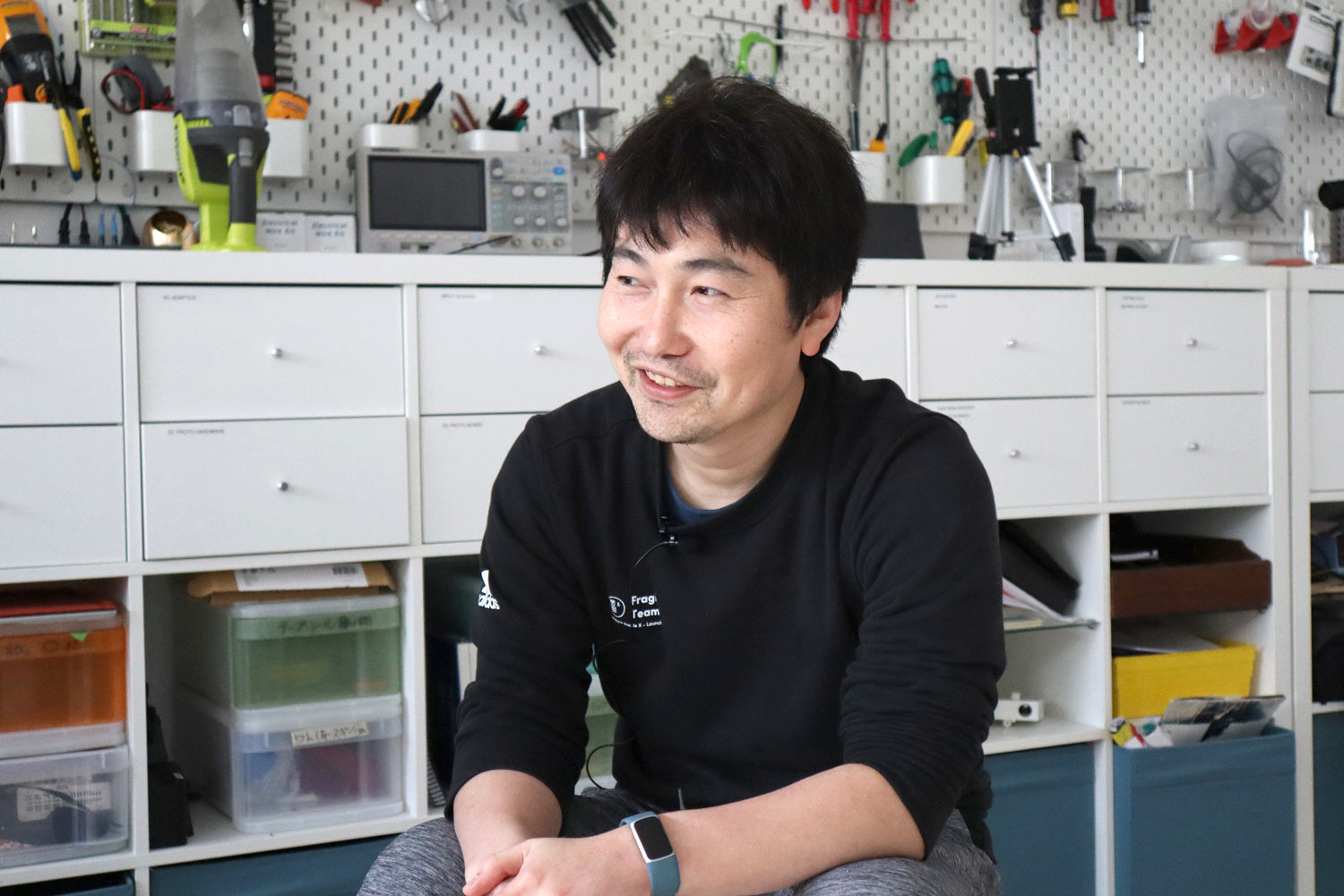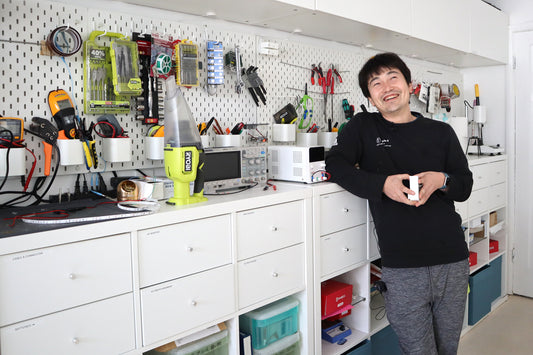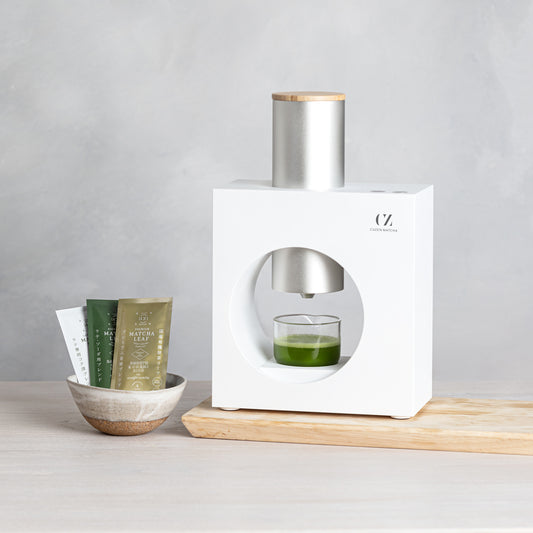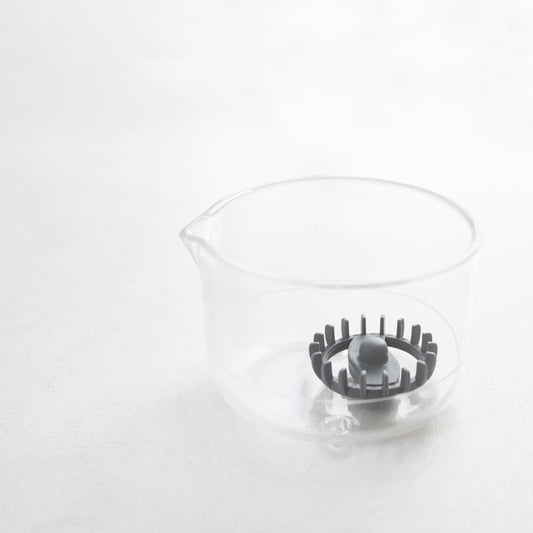

Meet Naoto, our mechanical engineer
Behind the sleek design of the Matcha Maker is a seasoned engineer from a tea-farming family, with a history of centering the user experience in his designs. Cuzen CEO, Eijiro Tsukada, sat down and talked to him about his journey to the US and how his experiences helped him engineer the Matcha Maker.
Contents
- From Shizuoka to Silicon Valley
- Centering the user experience
- Making the Matcha Maker
- Naoto san and tea
1. From Shizuoka to Silicon Valley
Eijiro [E]: Can you share a little bit about your background and how you decided to move from Japan to the United States?
Naoto [N]: I was born and raised in Hamamatsu, in Shizuoka, Japan—the home of Honda and Yamaha—where the Japanese tea and machinery industries are thriving. I was always interested in tea and the machinery industry.
In my previous work, I designed SONY TVs, and worked with WHILL, a wheelchair startup in Japan and the U.S. As an early WHILL team member, I was involved in a wide range of activities from mechanical design to market development. In the process, I moved to Silicon Valley from Tokyo.
E: Can you tell us the beginning of your story with Cuzen and a little about how we met?
N: I met Edahiro-san (Naoya-san), Cuzen’s product designer, when I was in Tokyo participating in a design contest with him. The contest had us working together on specific technologies for developing countries. When Naoya-san introduced us at the café, I thought Cuzen was an interesting concept, particularly the powder aspect, which I had never worked with before.
2. Centering the user experience
E: You have been praised for your focus on the user experience at WHILL, the wheelchair company you worked with before Cuzen. Can you talk about that a little bit?
N: My participation as a mechanical engineer with WHILL was very rewarding because of the direct and positive impact on the wheelchair users, but it was the most challenging project I’ve been a part of.
I talked to many product users because I was not a user myself. I started by finding out where wheelchair users were. Sometimes I would stop wheelchair users on the street, go to hospitals, go to rehabilitation centers or go to schools and talk to them. The demographics of wheelchair users is expansive, and each person has a different level of injury and disability, so figuring out the target user was difficult. I learned how to quickly make a prototype for the purpose of user feedback, and then directly transfer that feedback to product definition. It helps that people in Silicon Valley are open to trying new things and are willing to give positive feedback.
3. Making the Matcha Maker
E: Can you tell everyone what made you interested in Cuzen?
N: When I started up with Cuzen, I thought it would be interesting to work with powders and powdered materials. My grandfather was a tea farmer, and there was a tea field in front of his house, so I was familiar with the agricultural aspect.
When you told me about the tea farm, I thought, “I understand,” because when I was little, I used to pick tea on my grandfather’s farm during Golden Week. (Golden Week is a series of national holidays that sometimes overlaps with the year’s first week of tea harvest.) I was interested in learning more about matcha in particular, and about the catechins and other benefits of tea.
E: What were your first thoughts when you heard my ideas?
N: I like to take on challenges that others haven’t. I thought the idea was an interesting challenge, because there are a lot of people who grind their own coffee, yet only hand-grinders are available for tea-lovers. With all the tea drinkers in the world, I thought the idea could work.
E: What were some challenges you faced when designing the mechanics of the Matcha Maker?
N: It is difficult to move something around like powder. You have to move tea leaves, turn them into powder, move the powder, get that into the water and move the liquid. Unlike the usual feeling of moving a mass, the movement is not simple and cannot be understood by a physics equation. Even though each particle individually follows the laws of physics, it is not easy to calculate and predict.
Secondly, evaluation is difficult. How do we convert sensitivity evaluation into quantitative evaluation? How do you evaluate whether something the size of 10 microns is delicious or not delicious?
E: I understand. Sensory evaluation was an eternal black box, even at Suntory, an earlier employer of mine.
E: Once before, you told me that the beauty of the Cuzen machine’s appearance is the domain of our product designer, but that creating beauty in the mechanics of the machine is your domain and it is important to you. Can you talk more about that?
N: I try to think about which mechanics are most important when making a product, and in the case of Cuzen, I think the mill is the most important. Using a mill to make powder is not something many people do, and handling powder and liquids is difficult. Only Cuzen Matcha does it, so I think it is important to invest in that area. It is right to look at the products and see what makes the customers the happiest, what is the most difficult, and what makes this company the most unique, and invest energy in that. The performance of the mill has a huge impact on the quality of the matcha powder. If the quality of the powder is good, the customer will be happy.
E: That’s good talk!
4. Naoto san and tea
E: Are you a big tea drinker?
N: I drink a lot when I’m doing tests for Cuzen. I drink coffee at other times, but my grandfather was a tea farmer. I was curious about the scientific and chemical aspects of matcha, such as the catechins and caffeine. Powders and beverages were also unknown to me, so I thought it would be fun to learn more about these unfamiliar subjects, while working with tea, which I felt a sense of familiarity with.
Read the story behind Cuzen Matcha Leaf and our Matcha Maker.
Related products
-
Organic Matcha Leaf packets
Regular price From $17.00USDRegular priceUnit price / per$17.00USDSale price From $17.00USD -
Matcha Maker Starter Kit
Regular price $299.00USDRegular priceUnit price / per -
Organic Single Origin Matcha Leaf
Regular price From $45.00USDRegular priceUnit price / per -
Whisking cup
Regular price $15.00USDRegular priceUnit price / per















